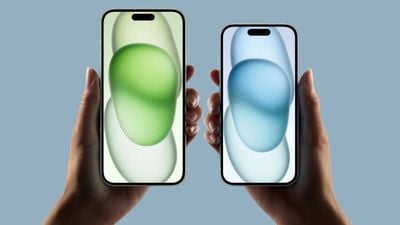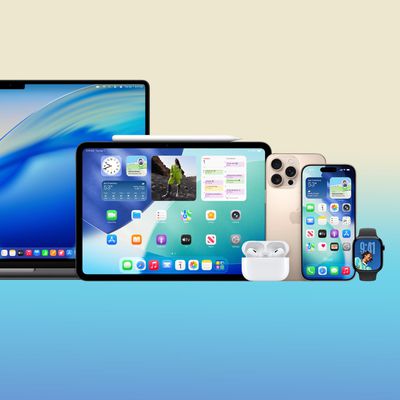Apple Uses Tiny QR Codes to Track Display Manufacturing Failures and Cut Costs
Apple etches iPhone displays with small QR codes that let it precisely track the number of defective screens that are thrown out by suppliers, according to a new report from The Information.

One barcode is the size of a grain of sand and can be viewed only with special equipment, while the other is on the inside of the display along the bezel. Apple spent millions of dollars developing the barcode process and installing laser scanning equipment at Lens Technology and Biel Crystal, two manufacturers that make the iPhone's cover glass.
With this system, Apple has a precise count of every piece of glass produced by Lens and Biel, and an exact read on how much material is wasted due to defects. A source that spoke to The Information said that when the barcodes were first implemented, Apple found that as many as three out of 10 pieces of cover glass were thrown away due to manufacturing errors, and with pressure from Apple, the suppliers have been able to cut that down to one in 10. Because Apple pays for production, lowering error rates has saved it hundreds of millions of dollars.
Apple has used the display barcodes to streamline manufacturing since 2020, and the company is able to see which company made the glass and the date it was manufactured for tracking production level and yield rate. Other iPhone components have had small barcodes to trace defects or find the source of leaks for many years, but prior to the display system, barcodes were primarily used for metal parts.
The Information's full report goes into more detail on the barcode, including the complex, multi-step process that Apple uses to get the barcodes onto the displays.
Popular Stories
Apple hasn't updated the Apple TV 4K since 2022, and 2025 was supposed to be the year that we got a refresh. There were rumors suggesting Apple would release the new Apple TV before the end of 2025, but it looks like that's not going to happen now.
Subscribe to the MacRumors YouTube channel for more videos.
Bloomberg's Mark Gurman said several times across 2024 and 2025 that Apple would...
You'd think things would be slowing down heading into the holidays, but this week saw a whirlwind of Apple leaks and rumors while Apple started its next cycle of betas following last week's release of iOS 26.2 and related updates.
This week also saw the release of a new Apple Music integration with ChatGPT, so read on below for all the details on this week's biggest stories!
Top Stories
i...
Next year's iPhone 18 Pro and iPhone 18 Pro Max will be equipped with under-screen Face ID, and the front camera will be moved to the top-left corner of the screen, according to a new report from The Information's Wayne Ma and Qianer Liu.
As a result of these changes, the report said the iPhone 18 Pro models will not have a pill-shaped Dynamic Island cutout at the top of the screen....
Since the beginning of December, Apple has been pushing iPhone users who opted to stay on iOS 18 to install iOS 26 instead. Apple started by making the iOS 18 upgrades less visible, and has now transitioned to making new iOS 18 updates unavailable on any device capable of running iOS 26.
If you have an iPhone 11 or later, Apple is no longer offering new versions of iOS 18, even though there...
The European Commission today praised the interoperability changes that Apple is introducing in iOS 26.3, once again crediting the Digital Markets Act (DMA) with bringing "new opportunities" to European users and developers.
The Digital Markets Act requires Apple to provide third-party accessories with the same capabilities and access to device features that Apple's own products get. In iOS...
Apple is significantly increasing its reliance on Samsung for iPhone memory as component prices surge, according to The Korea Economic Daily.
Apple is said to be expanding the share of iPhone memory it sources from Samsung due to rapidly rising memory prices. The shift is expected to result in Samsung supplying roughly 60% to 70% of the low-power DRAM used in the iPhone 17, compared with a...
Earlier this month, Apple released iOS 26.2, following more than a month of beta testing. It is a big update, with many new features and changes for iPhones.
iOS 26.2 adds a Liquid Glass slider for the Lock Screen's clock, offline lyrics in Apple Music, and more. Below, we have highlighted a total of eight new features.
Liquid Glass Slider on Lock Screen
A new slider in the Lock...
There has been a whirlwind of rumors over the last few days, sourced from leaked internal software designed for the iPhone and the Mac, and news sites like The Information. Below, we have a quick recap of everything we've heard this week, which serves as a guide to Apple's product plans in 2026 and beyond.
We've organized the info by likely release date, though there are some products that...
























